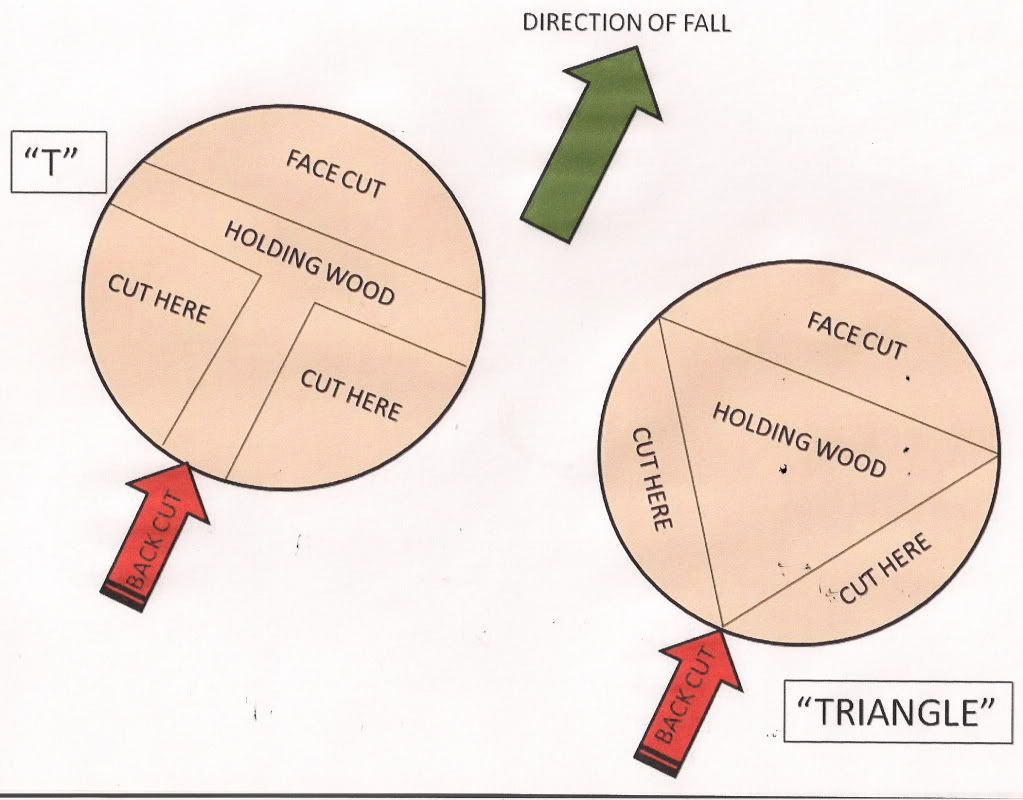Ambull01
Addicted to ArboristSite
I've been reading the USFS pdf documents to educate myself. I'm on Chapter 4 now and ran into something that's a bit confusing. I'll probably never use a bore cut, I'll leave that to the pros. All the things I've read lead me to believe bore cuts are usually used for heavy leaners and are cut parallel to the hinge. Then I saw and read this which has thrown me in a loop:

Using the guide bar’s tip, bore vertically at 90 degrees to the holding wood (fi gure 4–14).
Why is it showing the bore cut at a 90 degree angle?

Using the guide bar’s tip, bore vertically at 90 degrees to the holding wood (fi gure 4–14).
Why is it showing the bore cut at a 90 degree angle?





